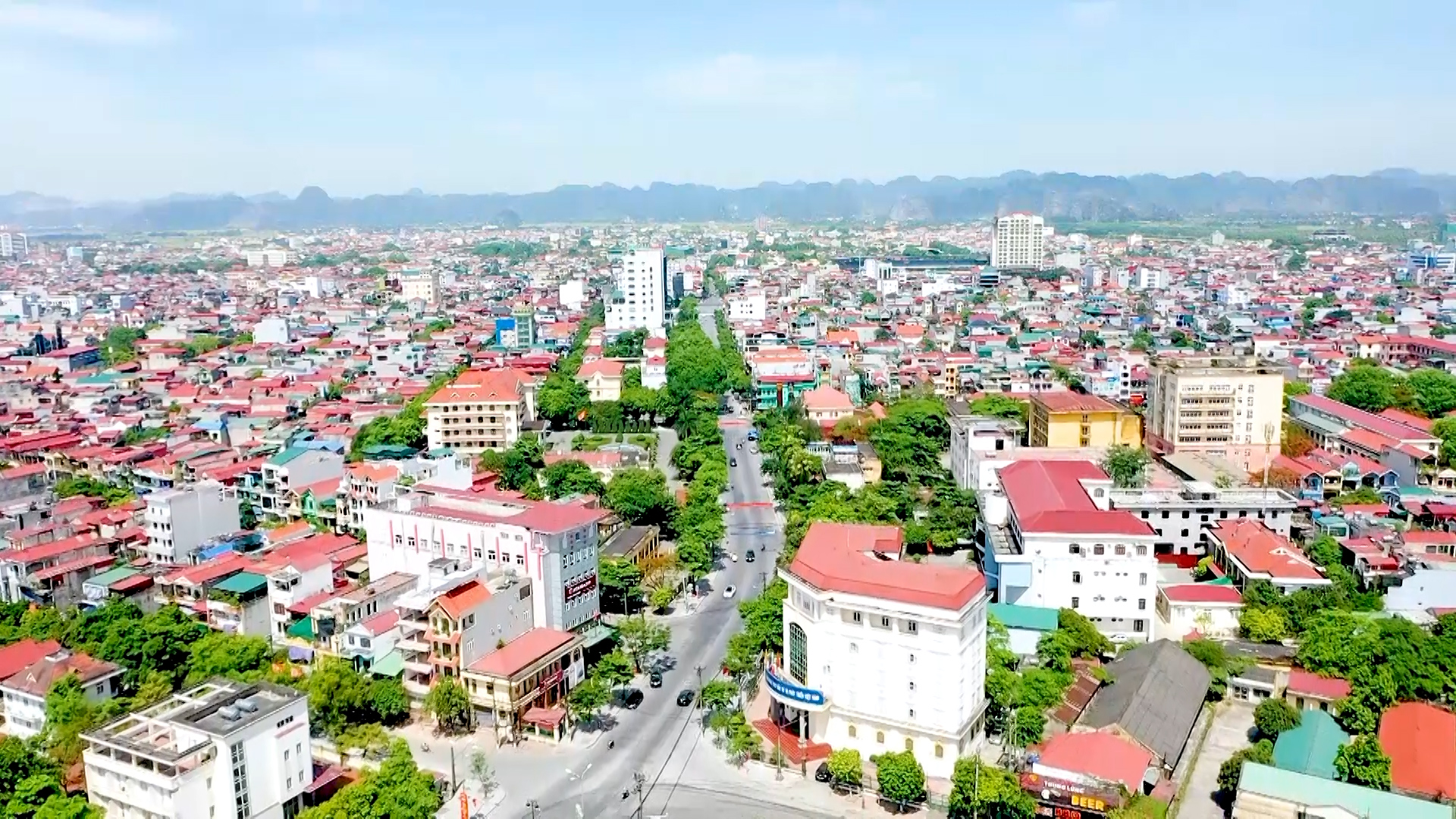
Speaking in Ninh Binh on January 31, 2025, General Secretary To Lam affirmed that the province’s development direction is correct, sustainable and aligned with its existing potential. This demonstrates the province’s determination to realise its green and sustainable development strategy.
Intersection of tradition and modernity
Ninh Binh is home to the Trang An Landscape Complex — a UNESCO World Heritage Site. With its majestic limestone mountains, intricate river systems and important historical relics, Ninh Binh brings together distinctive cultural, historical and natural values.
From a purely agricultural province, Ninh Binh has made steady progress in urbanisation. The province is modernising its infrastructure and expanding its space in a smart, green and sustainable direction.
Major transport projects, ecological urban areas, and the strong development of tourism and industry have improved the quality of life of residents.
Ninh Binh is maximising its advantages in cultural heritage and natural landscape to develop in a modern, sustainable direction, becoming a model heritage city of the 21st century. The province is committed to harmoniously combining conservation and development, and tradition and innovation, creating a solid foundation for a creative and liveable city.
A special feature in Ninh Binh’s development strategy is the combination of heritage preservation and urban modernisation. Preserving the natural landscape, developing sustainable tourism and conserving historical structures play crucial roles in this transformation.
Furthermore, pursuing the title of “Creative City” not only helps Ninh Binh develop economically but also elevates its position on the international map. With the combination of heritage, technology and innovation, Ninh Binh can become a model for sustainable development of Vietnamese cities in the future.
Heritage tourism — A sustainable competitive advantage
The Trang An Landscape Complex includes famous tourist destinations such as Tam Coc-Bich Dong, Thung Nham, Mua Cave, Hoa Lu Ancient Capital, and Bai Dinh Temple. These destinations create a diverse tourism ecosystem, attracting millions of visitors each year.
The strong development of eco-tourism, spiritual tourism and experiential tourism has helped Ninh Binh become an attractive destination on Vietnam’s tourism map.
Additionally, the tourism infrastructure continues to improve, with convenient transport and the continuous construction of high-end hotels and resorts meeting the needs of both domestic and international tourists.
Beyond its tourism strengths, Ninh Binh also has potential in industry, high-tech agriculture, and services. The sustainable preservation and exploitation of heritage values will help the province generate stable revenue and promote local economic development.
Thanks to its environmental protection efforts and green tourism development, Ninh Binh has been continuously recognised in international rankings. Notable examples include: Forbes Magazine (USA) voting Ninh Binh as one of the world’s most wonderful and friendliest destinations in 2023; and its placement in the Top 10 best world experiences in 2024.
Towards a green economy - sustainable development direction
Ninh Binh’s provincial planning represents a strategic vision helping to shape socio-economic development space, ensure regional connectivity and promote local strengths. Within this, the provincial capital of Hoa Lu (merged from the former Ninh Binh City and Hoa Lu District) will be the development nucleus, creating momentum for the province to achieve its goal of having a centrally-governed city by 2035.
The key development sectors include: tourism, cultural industries and entertainment — leveraging heritage advantages and unique natural landscapes; automotive mechanical industry — an important growth driver, modernising the economy; and multi-value ecological agriculture — balancing economic development and environmental protection.
Ninh Binh Chairman Pham Quang Ngoc affirmed that the province aims not only for a green economy, but also an innovative economy where high technology and artificial intelligence will play important roles in improving productivity and the quality of life. Additionally, Ninh Binh is focused on promoting science-technology, innovation, digital transformation and green transformation to improve efficiency across all sectors.
These directions will not only help the province maximise its potential and competitive advantages but also affirm its pioneering role in sustainable development.
Ninh Binh’s provincial planning has received agreement from residents and the business community. Nguyen Van Hung, a local resident, shared: “I believe that, with this direction, Ninh Binh will both preserve its identity and develop into a modern city.”
Meanwhile, Le Thi Mai, a young entrepreneur, said: “We are very much looking forward to contributing to the province’s development, especially in tourism and cultural industries.”
Environmental protection — A community responsibility
During his recent visit to send Tet greetings and launch the tree planting campaign in Ninh Binh, General Secretary To Lam emphasised the importance of environmental protection linked with socio-economic development.
Achieving this goal requires society-wide cooperation: building tree planting and forest protection movements. Every small action, such as planting a tree, saving water, and reducing plastic waste, contributes to building a green Vietnam.
In addition, Ninh Binh will promote green business models, encouraging businesses to use renewable energy and sustainable production; and raise community awareness by building environmental protection consciousness from families and schools to the whole society.
Ninh Binh’s recent achievements are clear evidence of its green, harmonious and sustainable development direction.
With continuous efforts, it is believed that Ninh Binh will not only be a millennial heritage city and creative city but also a model of sustainable development, making important contributions to Vietnam’s overall development.
Ninh Binh





